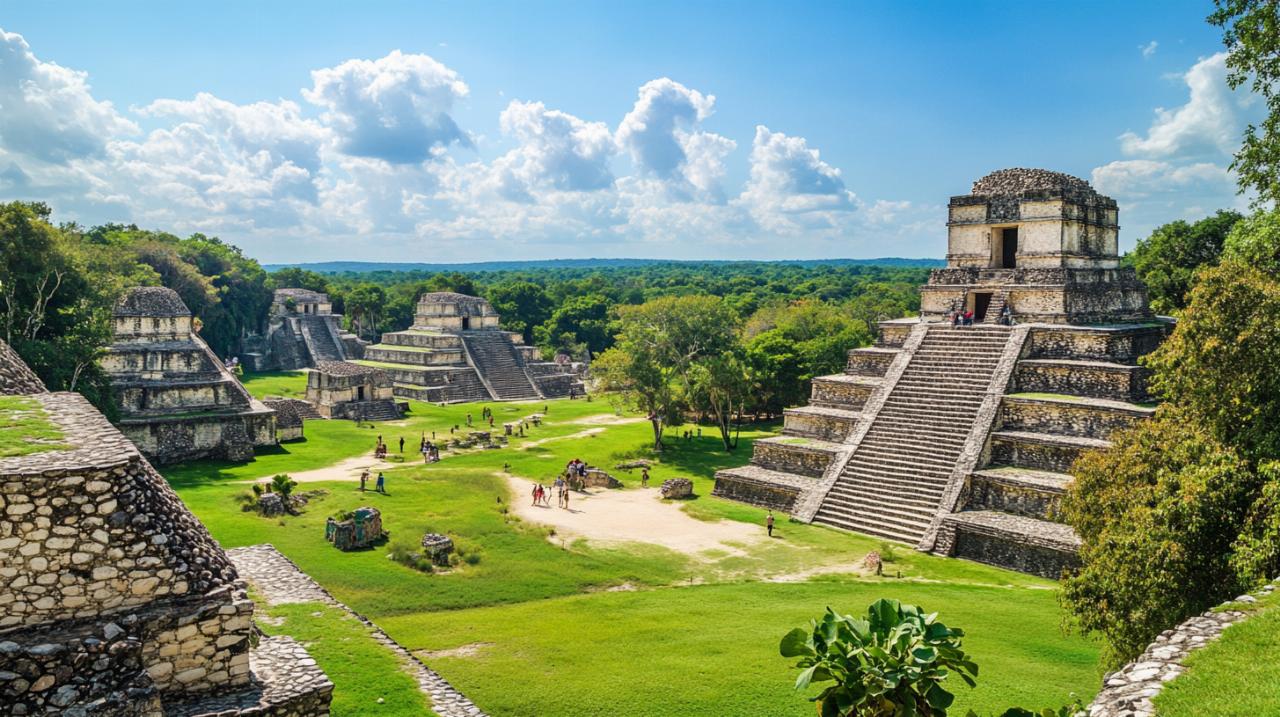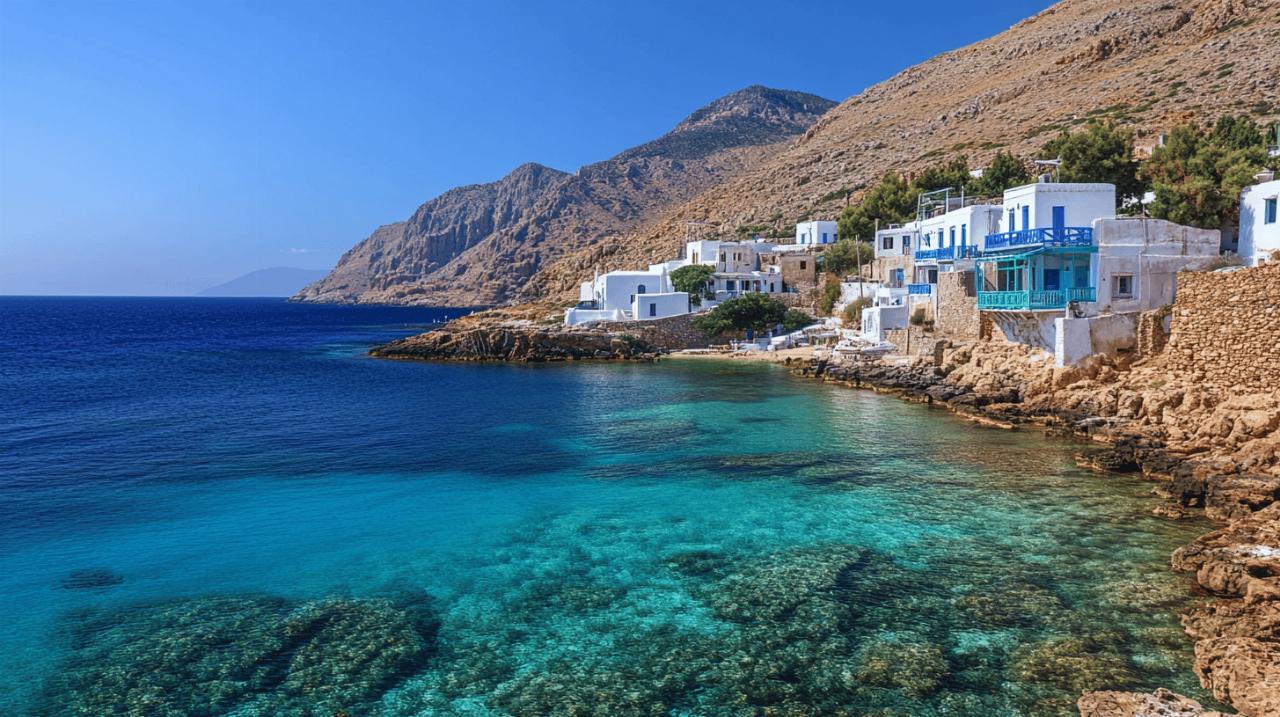Planning a getaway to Mexico offers endless opportunities to experience vibrant wildlife in some of the most stunning natural settings imaginable. From the lush jungles surrounding Tulum to the crystal-clear waters off the coast of Playa del Carmen, the Yucatan Peninsula presents a treasure trove of encounters with exotic birds, marine creatures, and diverse ecosystems. Whether you're keen on birdwatching in serene reserves or snorkelling alongside sea turtles, this guide provides practical advice to help you make the most of your wildlife-focused holiday whilst staying safe, managing your budget, and choosing the best accommodation options.
Tulum's Bird Sanctuaries: A Haven for Feathered Friends and Nature Enthusiasts
Tulum is renowned not only for its ancient ruins and stunning beaches but also for its rich birdlife and protected natural areas. The region serves as a sanctuary for countless species, making it a must-visit destination for anyone with an interest in ornithology or simply a love for nature. The diverse habitats around Tulum, from mangroves to coastal lagoons, provide ideal conditions for spotting both resident and migratory birds throughout the year.
Essential Tips for Visiting Sian Ka'an Biosphere Reserve and Local Bird Watching Spots
The Sian Ka'an Biosphere Reserve is one of the crown jewels of the Yucatan Peninsula and a UNESCO World Heritage Site. This vast protected area encompasses tropical forests, wetlands, and a portion of the Mesoamerican Barrier Reef, offering unparalleled opportunities to observe wildlife in their natural habitats. When planning your visit, it's advisable to book a guided tour with a reputable operator who knows the reserve intimately. These guides not only help you spot rare species but also share valuable insights about the delicate ecosystems and conservation efforts in place.
Starting your day early is crucial for bird watching, as many species are most active during the cooler morning hours. Arriving at dawn increases your chances of spotting colourful toucans, herons, and the elusive roseate spoonbill. Patience and silence are your best companions; moving quietly through the trails and along the waterways ensures you won't disturb the birds or other wildlife. Remember to bring binoculars and a field guide to help identify the various species you encounter. Additionally, wearing neutral-coloured clothing helps you blend into the surroundings, making it easier to observe birds without startling them.
Beyond Sian Ka'an, Tulum offers several smaller reserves and coastal lagoons where birdwatching is equally rewarding. Local tour operators often organise half-day excursions that combine birdwatching with visits to cenotes or cultural sites, allowing you to experience multiple facets of the region in one trip. It's worth checking online reviews and asking fellow travellers for recommendations to ensure you choose a tour that aligns with your interests and fitness level.
What to Pack and Best Times for Bird Spotting in Tulum's Natural Reserves
Packing appropriately can make or break your wildlife adventure. Lightweight, breathable clothing is essential given the humid tropical climate, but it's also wise to bring long sleeves and trousers to protect against insects and the sun. A wide-brimmed hat and high-factor sunscreen are non-negotiable, as the sun can be fierce even during early morning excursions. Insect repellent is another must-have, particularly one containing DEET, to ward off mosquitoes that thrive in the wetlands and forested areas.
Comfortable, waterproof footwear is equally important, especially if your tour involves walking through marshy terrain or boarding small boats to navigate the lagoons. A small backpack with a reusable water bottle will keep you hydrated throughout the day, and packing a light rain jacket is sensible given the unpredictable nature of tropical weather. Don't forget your camera or smartphone with a good zoom lens to capture those memorable moments, though always prioritise observing the birds directly rather than solely through a screen.
The best times for bird spotting in Tulum vary depending on the species you're hoping to see. The dry season, which runs from November through to April, is generally considered optimal for wildlife viewing, as the weather is more predictable and many migratory species pass through or settle in the region during this period. However, the wet season also has its charms, with lush vegetation and active breeding behaviours among resident bird populations. Visiting during the shoulder months of May or October can offer a balance of favourable weather and fewer crowds, allowing for a more intimate experience with nature.
Playa del Carmen's Marine Adventures: Swimming with Sea Turtles and Exploring Coral Reefs
Just a short distance north of Tulum, Playa del Carmen serves as a gateway to some of the most spectacular marine environments in the Caribbean. The warm, clear waters of the Riviera Maya are home to vibrant coral reefs, playful dolphins, and gentle sea turtles, making it an ideal destination for snorkelling and diving enthusiasts. Whether you're a seasoned diver or a first-timer eager to explore the underwater world, Playa del Carmen offers a range of experiences suited to all skill levels.
Top Snorkelling and Diving Sites Along the Riviera Maya Coastline
The coastline stretching from Playa del Carmen down to Tulum is dotted with exceptional snorkelling and diving sites. One of the most popular spots is the coral reef near Akumal, a charming coastal village renowned for its resident sea turtles. Here, you can don your snorkel gear and glide alongside these graceful creatures as they graze on seagrass beds. The experience is both humbling and exhilarating, offering a glimpse into the serene daily life of these ancient mariners.
For those seeking more adventurous underwater encounters, the reefs around Cozumel are world-famous and easily accessible from Playa del Carmen via a short ferry ride. Cozumel's reefs boast an incredible diversity of marine life, including colourful parrotfish, angelfish, and moray eels. Drift diving along the Santa Rosa Wall or Palancar Reef provides a thrilling ride with the current whilst marvelling at the intricate coral formations and schools of tropical fish.
Closer to Playa del Carmen itself, the nearby cenotes offer a unique freshwater diving experience. These natural sinkholes, formed by the collapse of limestone bedrock, reveal a hidden world of crystal-clear waters and fascinating geological formations. Cenote diving requires a different set of skills and is best undertaken with a certified guide, but the surreal beauty of these submerged caverns makes it a bucket-list adventure for many divers.
Safety Guidance and Equipment Hire Costs for Marine Wildlife Encounters
Safety should always be your top priority when engaging in marine activities. Before heading out, ensure that you book with a licensed and reputable tour operator who provides well-maintained equipment and adheres to local safety regulations. Most operators will conduct a brief orientation and check that all participants are comfortable in the water, which is especially important for families with children or less experienced swimmers.
When swimming with sea turtles, it's vital to maintain a respectful distance and avoid touching or chasing the animals. These creatures are protected by law, and interfering with them can result in fines or other penalties. Observing from a safe distance not only protects the wildlife but also enhances your experience, as turtles are more likely to remain calm and allow you to watch their natural behaviours.
Equipment hire costs for snorkelling and diving are generally reasonable and vary depending on the provider and the type of excursion. Basic snorkel gear, including a mask, fins, and snorkel, can typically be hired for around ten to fifteen pounds per person for a half-day trip. Full-day diving excursions with equipment and a guide usually range from fifty to eighty pounds, though prices can be higher for specialised dives such as cenote exploration or night dives. Many tour packages include transport, refreshments, and sometimes a light meal, offering good value for money.
Travel insurance that covers water sports and diving is an absolute must. Verify that your policy includes coverage for medical emergencies, equipment loss, and potential evacuation, as healthcare in Mexico can be costly for visitors. Additionally, ensure that your dive operator is affiliated with a recognised diving organisation and that all guides hold current certifications. Taking these precautions allows you to relax and fully enjoy your marine adventures without unnecessary worry.
Wildlife Safari Options Across the Yucatan Peninsula: From Jungle Tours to Coastal Excursions
The Yucatan Peninsula is a biodiversity hotspot, offering a wealth of safari-style experiences that cater to all ages and interests. From guided jungle treks where you might encounter howler monkeys and crocodiles to coastal boat tours that showcase the region's marine megafauna, there's no shortage of ways to immerse yourself in Mexico's natural wonders. These excursions not only provide thrilling wildlife encounters but also foster a deeper appreciation for the conservation challenges facing these precious ecosystems.
Family-Friendly Wildlife Tours in Quintana Roo: Prices and Booking Recommendations
Quintana Roo, the Mexican state encompassing Cancun, Playa del Carmen, and Tulum, is particularly well-suited for family travel thanks to its range of accessible and engaging wildlife tours. Many operators offer half-day or full-day excursions designed with families in mind, featuring activities that are both educational and entertaining for children and adults alike. For instance, boat tours through the mangroves around Cancun provide opportunities to spot manatees, dolphins, and a variety of bird species in a safe and comfortable setting.
Another popular option for families is visiting the numerous eco-parks scattered throughout the region. These parks combine wildlife observation with cultural experiences, such as traditional Mayan performances and craft demonstrations. Whilst some purists may prefer more rugged, off-the-beaten-path adventures, these parks offer a convenient and controlled environment where younger children can safely interact with nature and learn about local wildlife.
Prices for family-friendly wildlife tours vary widely depending on the duration and inclusions. A typical half-day mangrove tour might cost around thirty to forty pounds per adult and fifteen to twenty pounds per child, with many operators offering family discounts or packages. Full-day eco-park visits, which include multiple activities and meals, can range from fifty to seventy pounds per person. Booking in advance through reputable websites or directly with tour operators often secures better rates and ensures availability, particularly during peak holiday periods.
When selecting a tour, look for operators with strong reviews regarding safety standards, environmental practices, and the quality of their guides. Many companies are committed to sustainable tourism and contribute a portion of their profits to local conservation projects, which is something worth supporting. Additionally, confirm whether the tour includes hotel pickup and drop-off, as this can save time and stress, especially when travelling with young children.
Health and safety precautions when exploring mexico's natural habitats
Exploring Mexico's diverse natural habitats requires a sensible approach to health and safety. The tropical climate means that mosquitoes and other biting insects are prevalent, particularly in forested and wetland areas. Protecting yourself against insect bites is crucial not only for comfort but also to reduce the risk of mosquito-borne illnesses such as dengue fever and Zika virus. Using a high-quality insect repellent, wearing long sleeves and trousers, and sleeping under mosquito nets if staying in more remote lodges are all effective preventive measures.
Staying hydrated is equally important, as the heat and humidity can quickly lead to dehydration, especially during active excursions. Carry a refillable water bottle and drink regularly throughout the day, even if you don't feel particularly thirsty. It's also wise to avoid drinking tap water; stick to bottled or purified water to minimise the risk of stomach upsets.
Sun protection cannot be overstated. The sun in this part of the world is intense, and prolonged exposure can lead to severe sunburn or heatstroke. Applying a broad-spectrum sunscreen with a high SPF factor, wearing a hat, and seeking shade during the hottest part of the day will help keep you safe. If you're planning to spend time in the water, choose a reef-safe sunscreen to protect the fragile marine ecosystems.
Before travelling, check with your GP or a travel health clinic about any recommended vaccinations or preventive medications. Routine vaccinations should be up to date, and depending on your itinerary, additional vaccines for hepatitis A or typhoid might be advised. Carry a basic first aid kit with essentials such as plasters, antiseptic wipes, and any personal medications you may need. Having travel insurance that covers medical emergencies, including evacuation, provides peace of mind and financial protection in case of unexpected health issues.
Planning your wildlife-focused mexican holiday: accommodation, budget, and travel documents
A successful wildlife-focused holiday in Mexico hinges on careful planning, from selecting the right accommodation to managing your budget and ensuring all travel documents are in order. The region offers a broad spectrum of lodging options, from luxurious beachfront resorts to eco-lodges nestled in the jungle, each providing unique advantages depending on your priorities and budget. Understanding the costs associated with various activities and being prepared with the necessary paperwork will help ensure a smooth and enjoyable trip.
Best Hotels and Lodges Near Wildlife Hotspots in Cancun, Tulum, and Playa del Carmen
Choosing where to stay can significantly influence your overall experience, especially when wildlife encounters are a priority. In Cancun, many hotels are situated within easy reach of the Hotel Zone's beaches and nearby natural attractions. However, for a more immersive experience, consider staying closer to the biosphere reserves or coastal lagoons. Boutique eco-lodges in and around Tulum offer a more intimate connection with nature, often featuring sustainable practices such as solar power, rainwater harvesting, and locally sourced meals.
Playa del Carmen strikes a balance between vibrant nightlife and access to outdoor adventures. The town's central location makes it a convenient base for day trips to both Tulum's reserves and the cenotes to the south, as well as the diving sites around Cozumel. Many hotels in Playa del Carmen offer package deals that include guided tours and equipment hire, which can provide excellent value for money whilst simplifying your planning.
For those seeking a more off-grid experience, eco-lodges within or adjacent to the Sian Ka'an Biosphere Reserve provide an unparalleled opportunity to wake up to the sounds of the jungle and enjoy wildlife sightings right from your accommodation. These lodges are typically smaller and more rustic, but they offer a level of tranquillity and authenticity that larger resorts cannot match. Prices for accommodation vary widely, with budget-friendly options starting at around forty to fifty pounds per night, whilst mid-range hotels and eco-lodges might cost between seventy and one hundred and twenty pounds per night. Luxury resorts and boutique lodges can exceed two hundred pounds per night, especially during peak season.
When booking accommodation, consider proximity to the wildlife sites you wish to visit, the availability of guided tours, and the hotel's commitment to sustainable tourism. Reading reviews from fellow travellers and checking whether the property supports local communities or conservation efforts can help you make an informed choice that aligns with your values.
Budgeting for Wildlife Experiences: Activity Costs, Transport, and Travel Insurance Essentials
Budgeting for a wildlife-focused holiday in Mexico requires accounting for a variety of costs beyond accommodation. Activity expenses can add up quickly, particularly if you plan to participate in multiple tours and excursions. As a rough guide, budget around thirty to fifty pounds per person for half-day tours, and between sixty and one hundred pounds for full-day adventures. Diving excursions and specialised wildlife safaris may cost more, so it's wise to allocate a generous budget for these experiences.
Transport within the Yucatan Peninsula is generally affordable and straightforward. Local buses, known as colectivos, run frequently between major towns and are an economical option for budget-conscious travellers, with fares typically costing just a few pounds. Hiring a car offers greater flexibility and is especially useful if you plan to explore more remote areas or visit multiple wildlife sites in a short period. Car hire costs range from around twenty to forty pounds per day, depending on the vehicle type and rental company. Ensure that your rental includes adequate insurance coverage, and always drive carefully, as road conditions can vary.
Taxis and ride-sharing services are widely available in tourist areas, though it's advisable to agree on a fare beforehand or ensure the meter is running to avoid any misunderstandings. Many hotels and tour operators also offer shuttle services, which can be a convenient and cost-effective way to reach popular attractions.
Travel insurance is an essential component of your trip planning. A comprehensive policy should cover medical expenses, trip cancellations, lost luggage, and activities such as snorkelling and diving. Policies typically cost between thirty and sixty pounds for a two-week holiday, though prices vary based on your age, health, and the level of coverage. It's worth shopping around and reading the fine print to ensure that all your planned activities are included.
Before you travel, ensure that your passport is valid for at least six months beyond your planned return date. British citizens do not require a visa for tourist visits to Mexico of up to one hundred and eighty days, though you will need to complete a tourist card upon arrival, which is usually provided on your flight. Keep a copy of your passport, travel insurance documents, and any booking confirmations in a secure location, both physically and digitally, to safeguard against loss or theft.
Managing your money wisely is another key aspect of budgeting. Whilst credit and debit cards are widely accepted in tourist areas, it's sensible to carry some cash in Mexican pesos for smaller purchases, tips, and transactions in more remote locations. Notify your bank of your travel plans to avoid any issues with card usage abroad, and be aware of any foreign transaction fees that may apply. With careful planning and a realistic budget, your wildlife-focused Mexican holiday can be both unforgettable and financially manageable.







